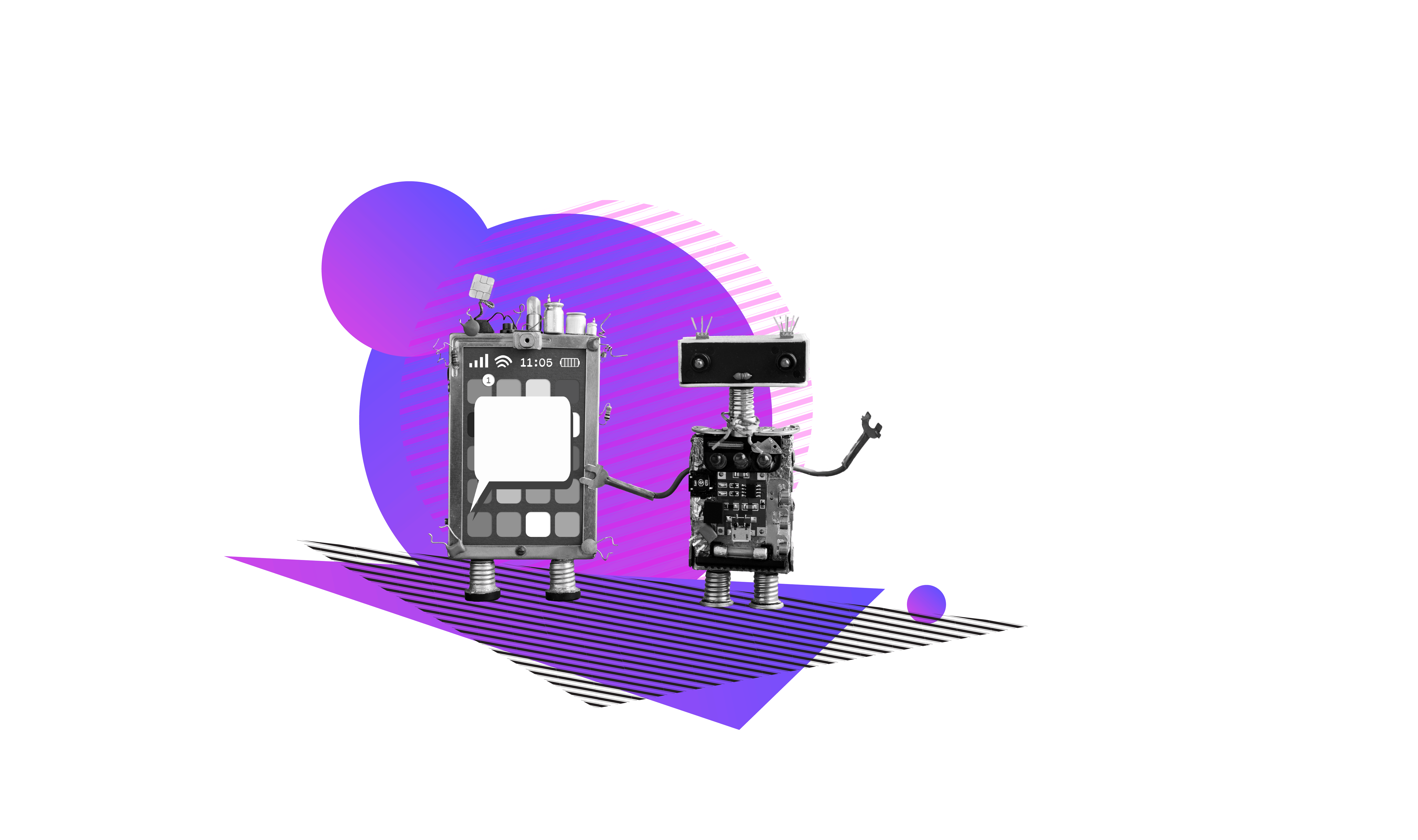Insurance: The New History
History, as we all know, is written by the victor. Winning means you get to tell your side of the story and have it live on through time as the facts as they accurately happened. How the simple passage of time elevates one person’s perspective to the absolute truth I’ll never know, but that’s how it is. In order to be history, you have to make history.
I’m going to venture into the world of insurance and tackle history with a more agile approach. In this new blog series, “Insurance: The New History” we’ll take a dive into the things happening in insurance and around insurance now, or things that I think will be a major player in the industry very soon. This is my perspective on the what, the why, and the how of history-making tech in insurance.
These articles should serve as an innovation jumpstarter or, better yet, get companies to think “let’s try something different” instead of “this is the way we’ve always done it; this is the way we’ll keep doing it.”
I’m hoping this helps people in insurance be the victor, the historian of record for their own stories.
Be the disruptors, not the disrupted.

AI: It’s not just about malevolent robots
Most of us have seen at least one of the Terminator movies. Unkillable robots, armed with time-travelling tech, attempt to dismantle human civilization as we know it. While this is a farcical movie series, the perceived threat of human-made robots becoming our overlords has lingered in the collective psyche for a long time. Whatever sci-fi might want you to think, robots empowered with Artificial Intelligence are unlikely to burn out the sky any time soon.
AI was never meant to function as a replacement for humanity. It was intended to create the next wave of automation, giving humans the ability to move up the thought chain and only apply human brainpower to what people should spend their time thinking about, solving, and fixing. We are in a time where AI is making staggering advances with companies like Amazon, IBM, Microsoft, and Google leading the charge. As exciting as this field is right now, it’s only going to get better, universities around the world are teaching this technology, and opening it up to the inventiveness of young minds, at a rapid pace.
According to Wikipedia, AI is defined as “intelligence demonstrated by machines, unlike the natural intelligence displayed by humans and animals.” Or better yet, machines that mimic “cognitive” functions that humans associate with the human mind, such as learning and problem solving. For now, AI is used in places where making decisions quickly is a necessity, as well as when data needs to be gathered, processed, or located.
The Insurance industry has been behind the technology curve for quite a while. But it is catching up, and more companies adopting AI is going to be yet another factor in bringing the industry forward. This tech is already simplifying some insurance processes: certain sales tasks, taking claims, and fraud detection to name just a few.
A pat on the proverbial back
As an industry, insurance is actually fairly far ahead of other industries when it comes to artificial intelligence. We have models that can predict how likely a customer is to get in a crash, others that can determine a person’s life insurance rate based on a selfie. We have companies that are utilizing fitbits for pricing, telematics, IoT devices, and a lot of other technologies. Companies are starting to deploy chatbots, license plate recognition, and even assessing damage on a vehicle from a picture or video. There are companies that can look at fraud in a whole different light to see patterns that we can now visualize in seconds.
Another area that the industry has picked up huge gains is by equipping their security teams, physical and cyber, with AI-driven tools. Facial recognition, security tools that “sense intrusion,” and even tools that can see something occurring and shut that down, just to spin up in another safe location.
But most of these aren’t what has been discussed when carriers are asked about their AI journey. They look to the lack of focused individuals doing model creation, processing, and training daily, then determine that insurance companies are only focusing on chatbots. I can tell you that is a completely false statement. AI has been skillfully deployed to an impressive degree to protect the company and the money that is collected to pay out claims.
There are only a few divisions of AI that an insurance company should really know about. To accomplish artificial intelligence, you really don’t need to know about any of these terms, but the super smart people that you have talking to you about AI will surely throw all of these terms at you during the discussion.
- Computer Vision: CV refers to an AI field that focuses on making it possible for computers to see, identify, and process digital images and videos in a way that mimics how humans understand what they see.
- Speech recognition: Enables the detection and translation of spoken language into text by computers.
- Natural Language Processing: NLP is the automatic manipulation of natural language, like speech and text, by software.
- Machine Learning: ML provides systems the ability to automatically learn and improve from experience without being explicitly programmed.
- Deep Learning: A class of machine learning that uses artificial neural networks, algorithms patterned after the human brain, to obtain progressively complex information from raw data.
- Deep Learning in CV: Applying Deep Learning to CV yields even more sophisticated, accurate results in terms of image identification, categorizing, and detection.
While insurance has had many impressive AI wins, all that the industry has accomplished so far is really just the beginning of the potential impact this tech could have.
Data is essential (or is it?)
One common claim that I hear often in conversations about AI is “we don’t have enough data to do AI.” Let’s break that statement down a little. “We” – who are they talking about, the company, the internet, the cloud, humanity, mother nature? When I look at the data that I have available to me, as a human, at this point in our history, I would say we have so much data we don’t even know what to do with it. The biggest misperception in “we” is that it is usually referring to the company and the amount of data they have available from their internal systems. While data programs are growing and getting more sophisticated at insurance companies, they are correct, data isn’t mature at insurance companies.
The second part of this complaint is the word “enough.” When I’m eating (which I do with great frequency and enthusiasm) I have an internal regulator that says I’ve had “enough.” If I’m on a diet and counting calories, I hit “enough” when I’ve met the specific caloric threshold said diet prescribes for me. Looking at the two scenarios, there is one that is determined by a human and one that is determined by an outside program. But these two examples both have the same thing, “enough” was defined before the eating started.
What if we looked at that statement a different way, “we don’t have enough data to do AI?”. I believe that a better way to phrase this might be “our company doesn’t understand the right data to make our AI successful.” This isn’t a statement that slams the door on the potential of an incredible technology, but it is a statement that prompts important questions: What would success with AI look like at this company? What is the right data? Does the whole company need AI? What do we need to understand to make something worthwhile happen?
Even though we’ve determined that the original question is sort of a throw-away comment, let’s get crazy and answer it anyway – YOU DO have the right data for all the problems that exist in insurance!
Large amounts of data are usually needed only to train the AI models, not to execute the model. For instance, if I take a picture of my vehicle and want to automatically fill in what the car make would be, there are trained models out there to look at the badges on a vehicle and determine if it is a Ford, Dodge, Lotus, etc. Those models needed a lot of pictures of vehicles to classify the images into the right make, but your insurance company only needs to take a picture and call a service that may be free or charged per service call.
Every day, insurance companies are spending millions on gathering data about their customers and prospects, we refer to this as third-party data. We use this data for decisioning, but what if we trained AI models on the data we already purchase? All of this can happen.
Stop wasting people
Waste, and how it’s defined, can a controversial subject in business. For our purposes, we’ll go with how Fujio Cho of Toyota defined it, “anything other than the minimum amount of equipment, parts, space, and workers time, which are absolutely essential to add value to the product.” In manufacturing, waste has been broken down into eight categories, the one that heavily applies to insurance is non-utilized talent. This refers to the waste of human potential and skill.
If you review the best insurance companies, not just the ones with the highest revenue, but also are great places to work, the company cares about hiring employees that truly care about their mission statements. Normally the mission statement includes something like “providing the best possible service.”
I would ask each of you, how can you focus on providing the best service if you don’t have the required data accessible at the time of need? Or even worse, underwriters who spend all of their time researching and almost no time understanding the research instead or having a conversation with the agent, broker, or customer to understand more about the customer’s situation? The answer is that they can’t. We have created roles that are in place to automate tasks that we have deemed not to be in the best interest of a person’s main job. Or we have purchased tech that creates more challenges than solutions for your problems, like traditional IVR phone systems.
When looking at the possibilities of AI in insurance, maybe start by taking a look at critical roles that interact with people the most and ask yourself, how much time does that person spend (as a percentage of their duties) working with the constituents they need to? You will be shocked at the answer. Whether they are spending their time looking up policy information, digging through multiple knowledge bases including legacy core policy systems, or typing information that could be gathered another way, we’ve created extremely inefficient processes. Processes that are wasteful and add no value.
An example of this would be: a claims adjuster goes out to assess the damage on a vehicle that was in a collision. One company forced the adjuster to write down the VIN for the vehicle. They translated it incorrectly when they copied the number from looking at it on the dash. There must be a better way to do this so translation errors are a minimum. Wait, there is (and has been) for years! A simple Optical Character Recognition (OCR) program could have allowed the adjuster to take a picture of the VIN plate or registration and copied it exactly. This is just one simple example.
Take a look at how you handle claims. Ask yourself, “in this process, where is work done by a human?” and the best question to ask is “does it have to be?”. There are so many parts of many insurance processes that can be automated with existing AI-driven tech.
And if all those little mundane, but necessary tasks, are done by computers, it frees of actual people to focus on parts of the insurance industry where computers are useless. Computers can’t provide empathy. In the insurance industry, this is why small claims like a rock from a road chipping a windshield can be fully automated, but someone who lost their house needs a lot of human interaction. Don’t just stop at the policy lifecycle, look beyond that, how can you help your agents connect with the community better, can you help them know what to say to a customer as the customer is walking in?
A chatbot is a great way to get started in AI, but a lot of companies don’t view this as a complete process cycle. Why should you go to multiple experiences to get all of your answers? Also, what happens if the bot can’t answer the question? Have you thought about how to point this to the RIGHT human being to answer the question? Have you applied sentiment analysis to see what kind of mood the person chatting is in? if they are in a bad mood, how do you deal with that without empathy?
Some other common places for AI that are highly underutilized would be minimizing data entry on a quote, simplifying the First Notice of Loss (FNOL) process, automating billing questions, fraud analysis, matching insurance products to customer needs, helping personal lines agents sell more complex commercial and life insurance, and a big one that I will be spending a lot more time on in a follow-up blog is Underwriting.
Do you need a huge team of AI specialists?
The answer is yes. Plain and simple, if you want to do artificial intelligence, you need a lot of people that understand data, mathematics, statistics, computers, and the ethics around data. You probably already have a couple of teams around the organization that do data science or have dabbled with AI. The actuarial team is one that is often overlooked, but highly skilled in the methods that AI teams utilize to create algorithms. Your company might also have a lot of developers that are skilled in automation, machine learning, AI, etc. But this isn’t enough…you need more.
The really good part is that you don’t have to hire these people as full-time employees. They don’t need desks taking up space. When looking at the “AI team” at a company, you should include third party data -providers, partners in the IT space that have AI teams on standby, software providers, universities, cloud providers, and challenge sites. It is beneficial to have a small team at the company that really understands AI and can put all of this stuff together to get leaders to understand what they are getting and what they aren’t, or maybe even what they are getting long term as the models are worked out.
There are sites like Kaggle on the internet that run contests to have people solve challenging AI problems for them. The prizes for people are typically far less than what it might cost for your team to build something internally.
Universities are often the most overlooked resource for insurance companies. They love to get real-life business cases for their students to work on. In addition to that, they often have the greatest minds doing research for them. There are some stipulations to this including ownership of IP (which normally gets made public), but with a jump start ahead of the competition and talking about possible scenarios and not the actual scenario for the algorithms, can keep the carrier far ahead for quite a while! Remember how hard it was/is for you to start your AI journey? Yeah, they all have the same problem, sometimes worse. Speed is the name of the game and if you are comfortable releasing something, just know that if it is good enough, your peers will steal it.
Don’t overlook the staffing of a team that focuses on AI, but don’t forget that you have a lot of other resources (a lot of them free) that can help you along the way.
Stop reading and start moving
In the insurance industry, the biggest potential with AI is using it to help employees, agents, brokers, carriers, and customers focus on relationship building. There needs to be a focus and you must stick to that focus.
If you want to “do AI” – you do have enough data. But that is only the beginning.
If you’re going to invest in this, go all in. You’re now armed with questions that will help you find the right data. Get the right team, and the right technology. If you don’t have it yet, go get it. Celebrate the wins, even if it’s just buying and utilizing a tool that gives you more AI capabilities.
Most importantly, enable your employees to build better relationships It’s a surefire way to make them happier and validate that what they do is truly helping others.

